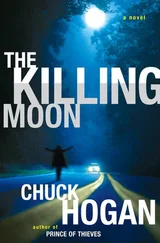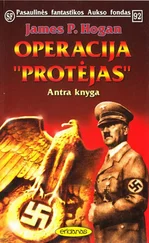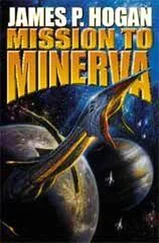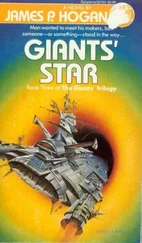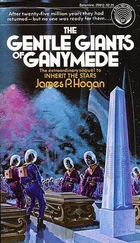One’s name was Koberg; the other’s was Lebansky. From their tight-jawed impassivity and overall bearing, they had to be military, Hunt guessed, and was proved right: both were U.S. Secret Service, formerly military police, currently attached to PAC security on Jevlen.
“Security?” Hunt looked puzzled. “I thought JPC turned that proposal down.”
“Yeah, well, that was for a UN force,” Koberg agreed. He gave the impression of being tactfully evasive. “I guess a few things have been happening on the quiet that maybe you won’t have heard about. You know how these things are: Some of our people kind of decided to go ahead anyhow, in a low-visibility way. You might call it a precautionary insurance.”
“Maybe the chief will explain it better when we get back,” Lebansky suggested.
They led the group out of the same exit that the school group had used, just as the pink bus was puffing away. A smaller ground vehicle was waiting for them, similar to a minibus, again riding on balls instead of wheels. Inside were two more men, Jevlenese this time, one in the driver’s station in front, the other seated by the door. Neither of them spoke any Terran languages, but the driver said something over a communications link that sounded like a confirmation that the party had been picked up.
“Today we travel the slow way,” Koberg said as they moved off. “There’s normally a fast-transit tube system into the city, but it’s not running.”
“Hell, what do you mean, ‘normally’?” Lebansky challenged. “The darn things are never running. This is normal.”
“Just when this side of the city’s going to be packed for a big rally that’s going on today,” Koberg said. “Purple-spiral loonies. Ever hear of them?”
“A little,” Hunt said.
“You’ll see plenty of ’em today,” Lebansky promised.
Jevlen had been developed as the home world of the Jevlenese within the Thurien civilization, and as such its layout reflected a human worldview rather than anything predominantly alien. Although Ganymean influence was inevitable, the geometry and architecture conformed to more familiar notions of style and consistency-which came as a relief to those who, after seeing the Vishnu, had prepared themselves for worse.
The metropolis was higher than anything that contemporary Earth had to offer, rising in the center to a monolithic fusion of towers, ramps, terraces, and bridges that dwarfed anything from home in scale and breathtaking concept; but the avenues passing amid the flyovers and disappearing into the central zone at various levels remained avenues, the levels remained levels, “up” meant the same thing everywhere, and surface and line in all directions extrapolated with reassuring predictability.
At any rate, those were the qualities inherent in the city’s fixed, unchanging aspect: the imprint of its origin, stamped in the same way that the underlying rock strata impart fundamental character and form to a landscape. But the promise that had been written into the soaring lines and broad vistas was just an empty voice echoing from long ago. The vision of those who had conceived the city had not been fulfilled.
Everywhere had the same look of weariness and shabbiness, the signs of neglect and disrepair that Hunt and Gina had seen from PAC the day previously. One area they passed had flooded, leaving the shells of several derelict buildings protruding above the water like islands in a swamp. In another, children swarmed in and over lines of immobilized, partly dismantled vehicles that looked as if they had not moved for years. After the crisp, new look of everything inside the Vishnu, the sights were depressing. The Jevlenese in the rear of the minibus seemed indifferent when Hunt tried questioning him, with the Americans acting as not-very-efficient interpreters. He seemed unaware of how things could be otherwise.
The people hung around in listless crowds, wandered aimlessly in the boulevards and squares, or sat on the grass in the open spaces beneath the pale chartreuse sky. Since the shutdown of the major part of JEVEX, many of them had moved out of the city’s central zone and taken up a shantytown existence in the outer sectors. They could be seen sitting in doorways, bartering in noisy street markets that had sprung up off the major throughways, and cooking under makeshift awnings beneath lines of washing strung across passageways and alleys. All of them inert, leaderless, waiting for somebody to point a direction.
“The trouble that a few agitators could stir up out there doesn’t bear thinking about,” Sandy said in a sober voice as she stared out at the passing scene. “No wonder Garuth’s having problems.”
“Is this policy of his going to work?” Duncan asked. He sounded very dubious. “Can it work?”
“Aw, they have to find out what the real world’s all about,” Koberg answered. “It’s just that with some it takes longer than with others. The ones you’re looking at now are the slow learners. There’s others doing okay. The system has to sort itself out.”
“It’s gonna take time,” Lebansky said. “You’ve gotta stick with it. That Garuth has got nerve. I’ll give the guy that.”
“Right,” Koberg agreed.
The roadway became one of a multilevel system curving in toward the looming bulk of the city’s central massif. The view that had appeared on the screen in the cabin of the surface lander as it descended had been misleading, Hunt saw as they approached the metropolis proper. Ahead, between the structures flanking both sides, he could see parts of what was revealed to be a false roof with an artificial inner sky over that section of the city. In some places the cliffs of buildings rose to support it, dividing the space beneath into enclosed basins of varied cityscapes interconnected in the upper parts by vast corridors carrying streams of airborne traffic and transport tubes; in other parts, the blocks of architecture came together to form upthrusts of streets and precincts open to the natural sky, or elsewhere soaring towers projecting through the canopies. The combined result of all of them formed what had seemed from above to be the actual skyline of the city undisguised.
Farther on, they passed growing numbers of people wearing purple, gathered in crowds and walking in processions with banners showing a purple spiral on a black background. “Is this what you were talking about?” Sandy asked the Americans.
“Right, that’s today’s big event,” Koberg replied. “Their great guru is in town. There’s a new sports complex being opened today-you can see it now, on the right there-and they’re having a big-” The bus slowed suddenly. “Say, what’s this? What’s going on there, Pete?”
Ahead, the traffic was coming to a confused halt and tailing back, with vehicles stopping in disorder at all angles across the lanes. There was another traffic level above; those vehicles were passing through a complicated interchange of on-off ramps and flyovers. The vehicles ahead were clustered around a two-lane exit road that left the main throughway in a descending curve, flying high over the immediate surroundings and supported by slender pylons on one side-and then it stopped abruptly at a ragged edge in midair. Figures were climbing out of vehicles and clustering along the barrier, waving their arms and pointing down.
Lebansky moved to the front of the bus, muttering to the driver and motioning with a hand. The driver, who had been doing nothing, since the vehicle had been driving itself from Geerbaine, engaged manual and pulled onto the shoulder, nosing through the other vehicles that had stopped. “Looks like there’s been some kind of accident,” Lebansky threw back as the others crowded to the windows. “Jeez, look at that! A whole piece of it’s collapsed there!”
Читать дальше


